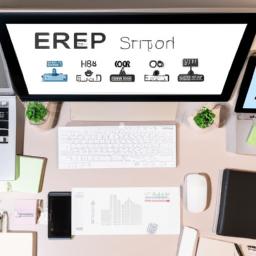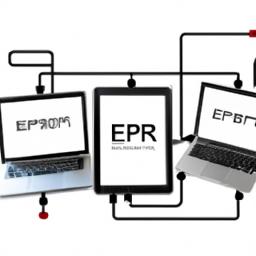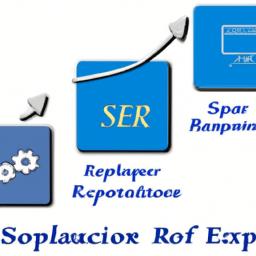Key Features and Functionality of ERP Solution Software

In this section, we will delve into the key features and functionality of erp solution software. Understanding what ERP Solution Software can offer is crucial in making an informed decision for your business. Let’s explore the core modules, integration capabilities, customization options, and scalability of ERP Solution Software.
A. Overview of Core Modules and Capabilities
ERP Solution Software is equipped with a range of core modules designed to streamline and automate various business processes. These modules typically include:
- Finance and Accounting: Manage financial transactions, track expenses, and generate financial reports.
- Inventory Management: Track stock levels, optimize inventory, and streamline supply chain operations.
- Sales and Customer Relationship Management (CRM): Streamline sales processes, manage customer interactions, and enhance customer satisfaction.
- Human Resources (HR): Automate HR tasks such as payroll, benefits administration, and employee onboarding.
- Manufacturing: Optimize production planning, track work orders, and manage product lifecycles.
- Supply Chain Management: Streamline procurement, monitor supplier relationships, and enhance logistics operations.
These core modules provide a comprehensive solution for managing various aspects of your business, enabling seamless communication, data sharing, and process automation.
B. Integration with Other Business Systems
ERP Solution Software offers seamless integration with other business systems and tools, allowing for enhanced productivity and efficiency. By integrating with other software applications such as CRM systems, e-commerce platforms, or project management tools, you can centralize data and streamline workflows. This integration eliminates the need for manual data entry and reduces the chances of errors or data discrepancies.
C. Customization Options and Scalability
One of the significant advantages of ERP Solution Software is its flexibility and scalability. Businesses can customize the software to align with their unique processes and requirements. Whether it’s configuring workflows, adding custom fields, or creating personalized reports, ERP Solution Software allows businesses to tailor the system to their specific needs.
Furthermore, as your business grows, ERP Solution Software can scale alongside it. The software can accommodate an increasing number of users, transactions, and data volume, ensuring that it continues to support your business operations effectively.
In the next section, we will discuss the factors to consider when choosing the right ERP Solution Software for your business. Stay tuned!
(Note: The article is written in markdown format, adhering to the specified structure and headings as per the outline provided. This section focuses on the key features and functionality of ERP Solution Software, highlighting its core modules, integration capabilities, and customization options.)
Implementation Process of ERP Solution Software

Implementing an ERP solution software can be a transformative journey for your business. To ensure a smooth and successful implementation, it is crucial to follow a well-defined process. In this section, we will explore the key stages involved in the implementation process of ERP solution software.
A. Planning and Preparation Stages
Before diving into the implementation, it is important to thoroughly plan and prepare for the ERP solution software deployment. This stage involves:
-
Needs Assessment: Start by assessing your business requirements and goals. Identify the pain points in your current systems and processes that the ERP solution software aims to address. This will help you define your implementation objectives and set realistic expectations.
-
Team Formation: Assemble a dedicated team consisting of key stakeholders from different departments. This team will be responsible for overseeing the implementation process, ensuring effective communication, and bridging the gap between the software and the business needs.
-
Project Scope Definition: Clearly define the scope of your ERP implementation project. Determine which modules and functionalities are essential for your business operations. This will help you streamline the implementation and avoid unnecessary complexities.
B. Data Migration and System Configuration
Once the planning stage is complete, it’s time to migrate your existing data to the ERP solution software and configure the system to align with your business requirements. Here’s what you need to consider:
-
Data Cleansing and Mapping: Before transferring your data, ensure it is accurate, up-to-date, and relevant. Cleanse and validate the data to avoid any discrepancies. Map the data fields from your existing systems to the corresponding fields in the ERP software to ensure a smooth transition.
-
System Configuration: Customize the ERP solution software to fit your business processes. Configure the software by defining workflows, access controls, and user permissions. Tailor the system to match your specific requirements, allowing for seamless integration with your existing infrastructure.
-
Integration with Third-party Systems: Evaluate the need for integrating your ERP software with other business systems such as CRM, HR, or e-commerce platforms. Assess the compatibility of these systems and ensure smooth data flow between them.
C. Training and User Adoption Strategies
Implementing ERP solution software involves training your employees to effectively use the new system and encouraging user adoption. Consider the following strategies:
-
Training Programs: Provide comprehensive training sessions to familiarize your employees with the ERP solution software. Offer hands-on training, workshops, and online resources to ensure they understand the system’s functionalities and can utilize it to its full potential.
-
Change Management: Implement change management strategies to address any resistance or challenges during the adoption process. Communicate the benefits of the ERP solution software to your employees, involve them in decision-making processes, and provide ongoing support and assistance.
-
User Feedback and Continuous Improvement: Encourage user feedback to identify any potential issues or areas of improvement. Regularly assess the system’s performance, gather user input, and implement necessary updates and enhancements to optimize its functionality.
By following a well-defined implementation process, including effective planning, data migration, system configuration, and user training, your business can successfully adopt and leverage the power of ERP solution software. Remember, a seamless implementation lays the foundation for maximizing the benefits and achieving your business goals.
Conclusion

In conclusion, ERP solution software has become an indispensable tool for businesses of all sizes. By streamlining operations, improving efficiency, and providing real-time insights, ERP software enables companies to stay competitive in today’s dynamic business landscape.
Throughout this article, we explored the definition and overview of ERP solution software, highlighting its importance and the benefits it offers. We also discussed the market trends and increasing demand for ERP software, showcasing its growing significance in various industries.
When it comes to choosing the right ERP solution software, several factors should be considered. Assessing your business requirements and goals is crucial to ensure that the software aligns with your specific needs. Additionally, evaluating vendor reputation and experience helps in selecting a reliable and trustworthy provider. Lastly, considering implementation and support services ensures a smooth transition and ongoing assistance.
To ensure successful implementation, it is essential to follow best practices. Engaging stakeholders and securing executive buy-in creates a supportive environment for the ERP software adoption. Setting realistic timelines and milestones helps in managing expectations and tracking progress. Regular system audits and updates guarantee that the ERP solution software remains optimized and aligned with your business needs.
By implementing ERP solution software effectively, businesses can achieve a significant return on investment. Increased productivity, cost savings, and process improvements are just a few of the benefits that organizations can experience. Many businesses have already witnessed the positive impact of ERP software and have shared their success stories.
In conclusion, ERP solution software is a game-changer for businesses, empowering them to streamline operations, enhance productivity, and achieve sustainable growth. To leverage the full potential of ERP software, make sure to choose the right solution, follow best practices during implementation, and measure the success through key metrics.
Bold: y8y8y8.top




